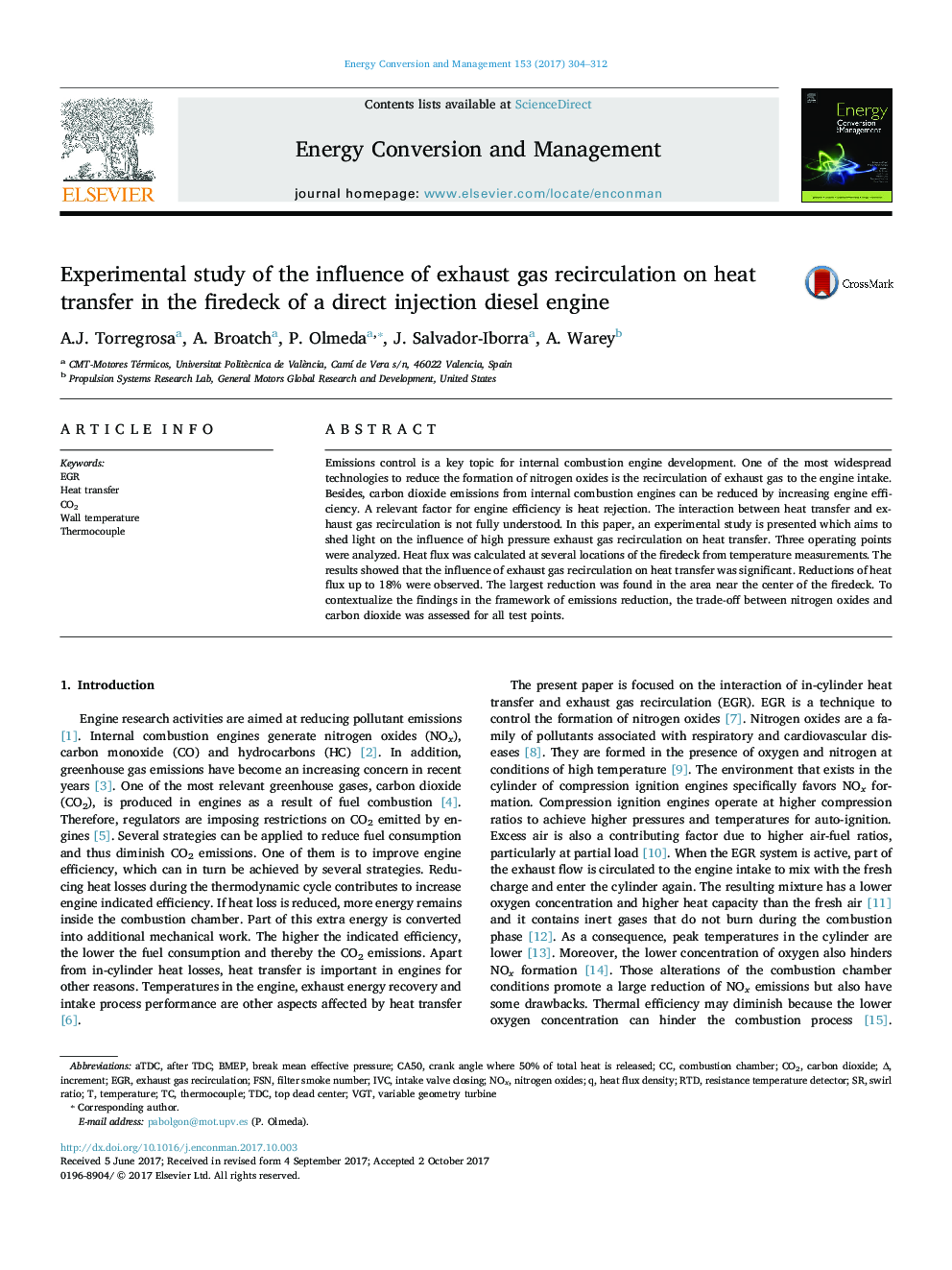| کد مقاله | کد نشریه | سال انتشار | مقاله انگلیسی | نسخه تمام متن |
|---|---|---|---|---|
| 5012210 | 1462809 | 2017 | 9 صفحه PDF | دانلود رایگان |
عنوان انگلیسی مقاله ISI
Experimental study of the influence of exhaust gas recirculation on heat transfer in the firedeck of a direct injection diesel engine
ترجمه فارسی عنوان
بررسی تجربی اثر تزریق گاز خروجی بر انتقال گرما در یک موتور دیزل مستقیم تزریق مستقیم
دانلود مقاله + سفارش ترجمه
دانلود مقاله ISI انگلیسی
رایگان برای ایرانیان
ترجمه چکیده
کنترل انتشار یک موضوع کلیدی برای توسعه موتور احتراق داخلی است. یکی از گسترده ترین فن آوری ها برای کاهش اکسید نیتروژن، احتراق گاز خروجی از موتور است. علاوه بر این، تولید دی اکسید کربن از موتورهای احتراق داخلی می تواند با افزایش کارایی موتور کاهش یابد. یک عامل مربوط به کارایی موتور، رد گرما است. تعامل بین انتقال گرما و احتراق گاز خروجی به طور کامل درک نشده است. در این مقاله، یک مطالعه تجربی ارائه شده است که هدف آن روشن کردن تأثیر تجدید جریان گاز خروجی با فشار بالا در انتقال حرارت است. سه نقطه عملیاتی مورد تجزیه و تحلیل قرار گرفت. شار حرارتی در مکان های مختلفی از اندازه گیری های دما محاسبه شده است. نتایج نشان داد که تأثیر تجدید جریان گاز خروجی بر انتقال حرارت معنی دار بود. کاهش شار حرارت تا 18٪ مشاهده شد. بزرگترین کاهش در ناحیه نزدیک مرکز ناپایدار یافت شد. برای به دست آوردن یافته های محقق در چارچوب کاهش انتشار، ترکیب بین اکسید نیتروژن و دی اکسید کربن برای تمام نقاط تست مورد ارزیابی قرار گرفت.
موضوعات مرتبط
مهندسی و علوم پایه
مهندسی انرژی
انرژی (عمومی)
چکیده انگلیسی
Emissions control is a key topic for internal combustion engine development. One of the most widespread technologies to reduce the formation of nitrogen oxides is the recirculation of exhaust gas to the engine intake. Besides, carbon dioxide emissions from internal combustion engines can be reduced by increasing engine efficiency. A relevant factor for engine efficiency is heat rejection. The interaction between heat transfer and exhaust gas recirculation is not fully understood. In this paper, an experimental study is presented which aims to shed light on the influence of high pressure exhaust gas recirculation on heat transfer. Three operating points were analyzed. Heat flux was calculated at several locations of the firedeck from temperature measurements. The results showed that the influence of exhaust gas recirculation on heat transfer was significant. Reductions of heat flux up to 18% were observed. The largest reduction was found in the area near the center of the firedeck. To contextualize the findings in the framework of emissions reduction, the trade-off between nitrogen oxides and carbon dioxide was assessed for all test points.
ناشر
Database: Elsevier - ScienceDirect (ساینس دایرکت)
Journal: Energy Conversion and Management - Volume 153, 1 December 2017, Pages 304-312
Journal: Energy Conversion and Management - Volume 153, 1 December 2017, Pages 304-312
نویسندگان
A.J. Torregrosa, A. Broatch, P. Olmeda, J. Salvador-Iborra, A. Warey,
